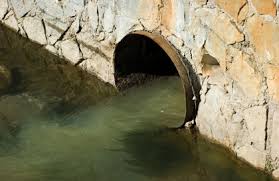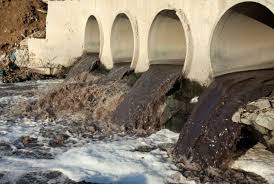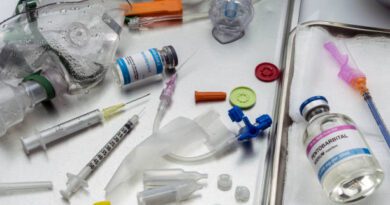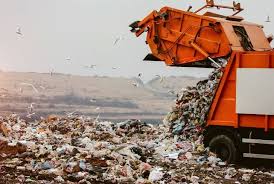Characteristics and Flow Rates of Waste-Water
The effective management of any waste-water flow requires a reasonably accurate knowledge of its characteristics. This is particularly true for waste-water flows from rural residential dwellings, commercial establishments and other facilities where individual water-using activities create an intermittent flow of waste-water that can vary widely in volume and degree of pollution.
Detailed characterization data regarding these flows are necessary not only to facilitate the effective design of waste-water treatment and disposal systems, but also to enable the development and application of water conservation and waste load reduction strategies.
Characteristics of Waste-water in Terms of Content
A number of chemical and physical characteristics are used to describe waste-water. The most common are:
Biochemical Oxygen Demand (BOD) is a measure of the amount of unstable organic matter in the water. It measures how much oxygen is required by the available micro-organisms to break down the readily available organic matter into simpler forms, such as carbon dioxide, ammonia and water.
Total Nitrogen (TN) and Total Phosphorus (TP) are the sum of all forms of nitrogen and phosphorus in the water, respectively. Both nitrogen and phosphorus are nutrients essential for plant growth.
A shortage of either one, or both, may limit the rate of plant growth in a water body. If the supply of the limiting nutrient is increased (and other circumstances such as appropriate amount of sunlight and appropriate temperature are favorable) blooms of algae or waterweeds may occur.
Faecal Microbes (which includes viruses, bacteria and protozoans) are found in waste-water and may cause disease. Faecal coliforms and faecal streptococci are bacteria that are found in the digestive tracts of humans and animals, including birds. Their presence in a water body indicates faecal contamination.
Read Also: Types and Sources of Waste-Water
Flow Rates of Waste-Water
Imagine a bustling city, its veins pulsating with life, and beneath the surface, a hidden network tirelessly managing the ebb and flow of wastewater. The flow rates of wastewater are the heartbeat of this intricate system, orchestrating a delicate balance between hygiene and sustainability.
At its essence, flow rates quantify the volume of wastewater gracefully traversing through pipes and channels, akin to a river navigating its course. Picture this as a choreographed ballet where every drop of water has its role, moving seamlessly from households to treatment plants with a rhythmic precision.
In this aquatic ballet, the units of flow rates become the poetic language, speaking of liters or gallons per second, giving us a tangible sense of the movement. It’s like reading a musical score, with each note representing a distinct moment in the wastewater’s journey.
The significance lies not only in the quantity but also in the quality of this liquid caravan. Engineers and environmental stewards are like maestros, ensuring that the wastewater flows at rates that allow for effective treatment, transforming it from a cacophony of pollutants to a harmonious, purified liquid ready to rejoin nature.
Understanding wastewater flow rates is akin to deciphering the city’s metabolism. A surge in flow might accompany a heavy rain, a collective sigh of the urban landscape shedding excess water. Conversely, a steady, measured flow during dry spells reflects the disciplined use of water resources.
In this narrative of flow rates, we find a profound connection between human actions and the environment. It’s a tale of responsibility and ingenuity, where the flow rates serve as the barometer of our commitment to a sustainable and healthy future.
So, next time you turn on the tap or flush the toilet, envision the liquid threads joining a grand ballet of wastewater flow rates, where science, engineering, and nature waltz together in a synchronized masterpiece.
Read Also: Guide to Recycling of Wastes and Advantages of Recycling
Components of Waste-water

Effluent quality is the physical, biological, and chemical characteristics of a liquid flowing from a component or device. The components of waste-water may be divided into four categories:
- Biochemical oxygen demand, total suspended solids and fats, oils and grease (BOD5 , TSS, FOG)
- Pathogens (fecal coliform, viruses)
- Nutrients (nitrogen, phosphorus), and
- Other chemicals.
Biochemical Oxygen Demands (BOD5) – Biochemical oxygen demand (BOD5) is the most widely used parameter applied to waste-water.
BOD5 is a measure of the dissolved oxygen required by micro- organisms to oxidize or decompose the organic matter in waste-water. A typical BOD5 value for septic tank effluent is 150 milligrams per liter. For a Type I system, the BOD5 limit is 170 milligrams per liter.
When the dissolved oxygen (DO) contained in septic tank effluent is measured, it is usually very low, typically one milligram per liter. While DO in water can be as high as 12 milligrams per liter, the micro- organisms in the septic tank normally use up any available oxygen to break down organic matter.
Read Also: The Growing Guide and Economic Importance of Planting Rice



